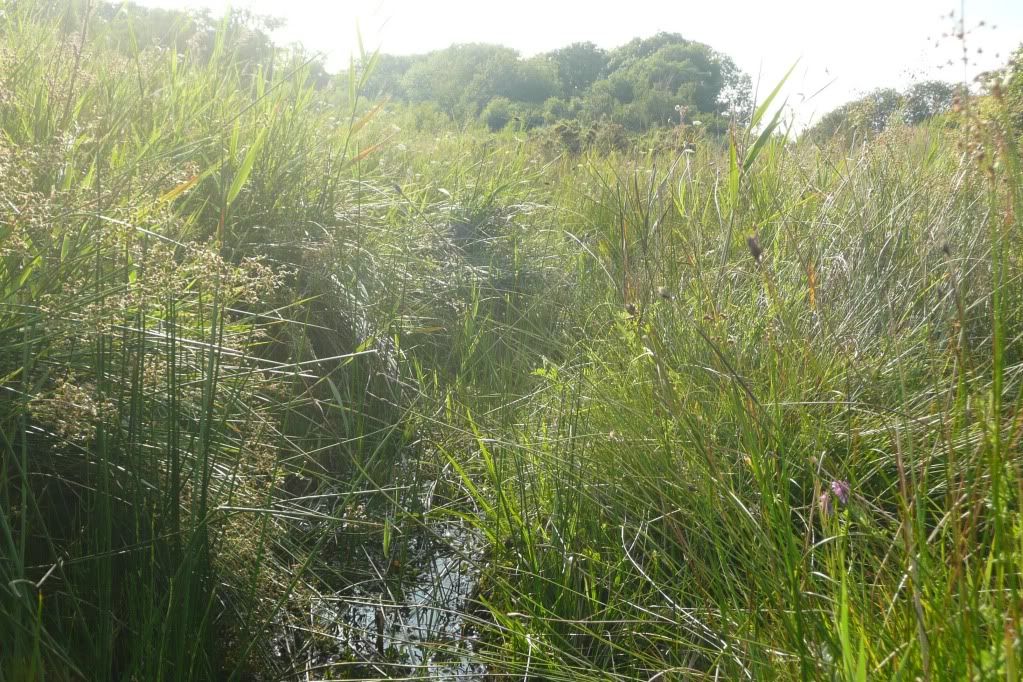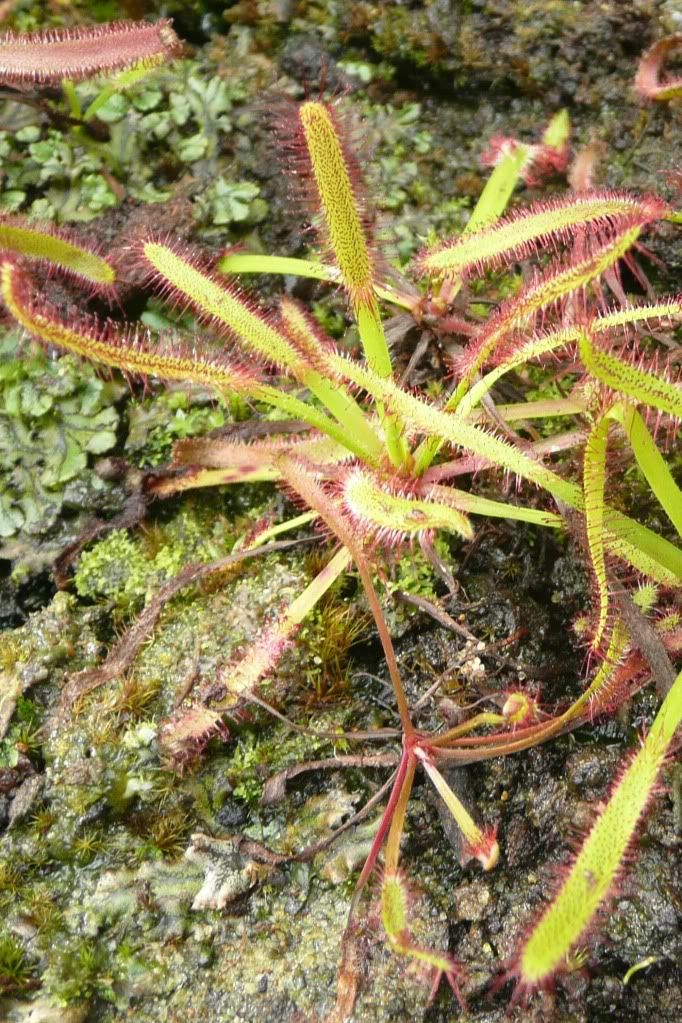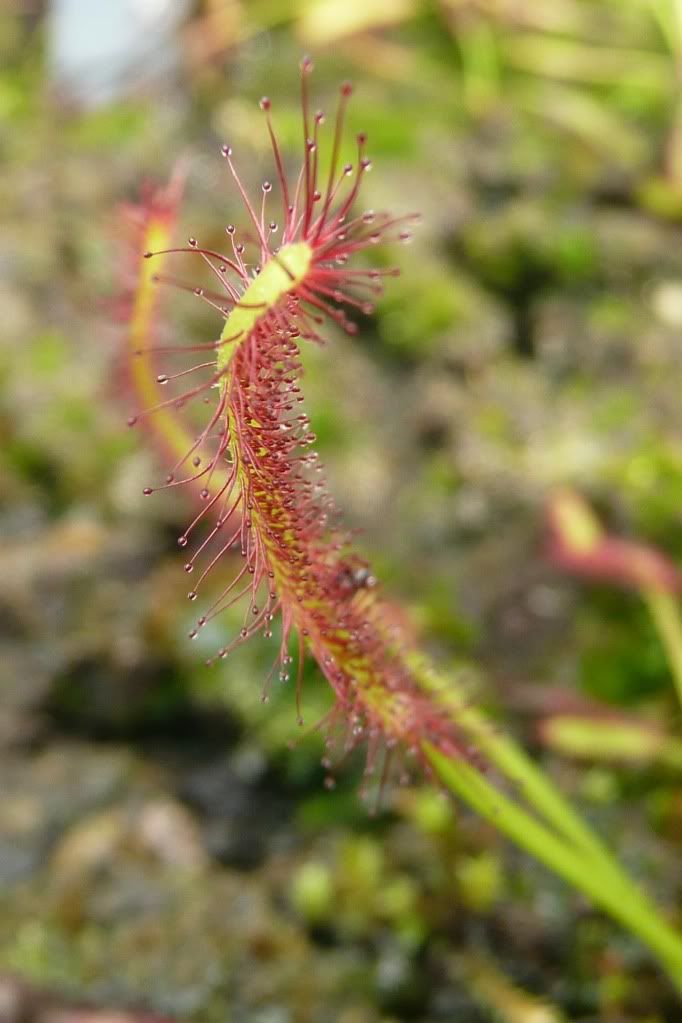Whilst most plants gain their nutrients from the soil via their roots, others have have evolved to obtain theirs from other sources - consuming insects.
Such insectivorous plants are the staple of wildlife documentaries, so it somewhat of a surprise to find they can be found only of couple of miles from Abingdon.
Growing in the fen at Parsonage Moor nature reserve is sundew. A fascinating plant that secretes a glue from tentacles on it's leaves, which intices insects (which are fooled into thinking it is nectar) but instead of feeding, the unfortunate insect is stuck to the leaves, which slowly fold in as the insect is digested.
Parsonage Moor is part of the Cothill Fens network of nature reserves which are fed by a series of springs, these feed into the Ock via Sandford Brook. And trying to locate such a small, scarce inconspicuous plant in such an environment is somewhat of a challenge - the fen is covered with tall reeds in which there are small pools where the sundew grow:
.
.
Although there are paths running through the fen, there is a risk of damaging the rare plants and insects which also inhabit the fen, as well as accidentally stumbling into some deep water or scaring the ponies which are used to graze the fen to control the scrub:
.
.
Fortunately another site exists in Oxfordshire where finding and photographing these remarkable plants is a lot more straightforward - the Oxford Universitry Botanic Gardens, where there is an entire greenhouse devoted to insectivorous plants, including Sundew:
.
.




I love the photo of the pony grazing in the fen! We have a carnivorous plant in my area, bladderwort, but I've never found it in the wild.
ReplyDeleteHi Anne,
ReplyDeleteAs always, thanks for the comment. I've just looked up bladderwort in one of our reference books and it also occurs in the UK (I never knew this) although unfortunately not our locality.
Glad you like the pony picture, it was somewhat of a surprise to come across them.
That's really interesting that we have the same carnivorous plant on both sides of the the pond. I hope I get a chance to see it one day. There is a fen about 2 hours drive from me.
ReplyDeleteHi Anne,
ReplyDeleteFortunately our fens are only 10 minutes drive again. And I've just an email from the wildlife trust, who manage the fens, that bladderwort has been found there too.
So I may go have a look to see if I can find it. One of the things I like about your blog is how similar, yet completely different are respective areas are.
Now, that is one wild looking sundew! Not round-leaved, not spatulate-leaved. Strap-leaved?
ReplyDeleteHi Ellen,
ReplyDeleteThanks for your comment, it's oblong leaved sundew (drosera intermedia).